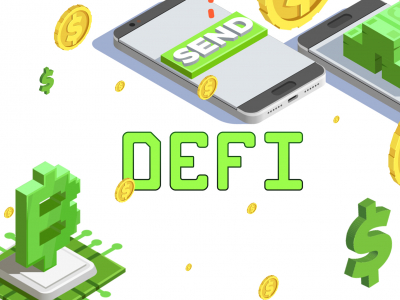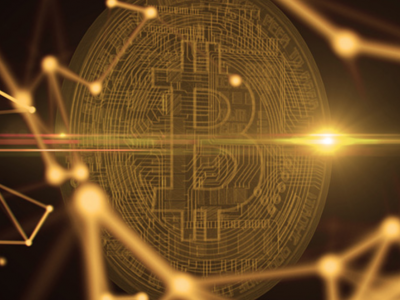As we celebrate Star Trek’s 50th anniversary, CoinFox is wondering what is the difference between federation credits and bitcoins and whether the cryptocurrency is “real money” after all.
We recently marked 50 years since Star Trek’s first episode The Man Trap was aired on 8 September 1966. Reading about the anniversary prompted me to look at what Star Trek possibly had to say about bitcoin. After all, a show that predicted mobile phones, tablet PCs and even Google Glass is bound to have foretold cryptocurrency as well.

The result of the research was rather disappointing. While bitcoin and Star Trek may share a similar path – from negative reviews to increasingly greater popularity – they do not seem to have much else in common. Despite attempts to reconcile what is known about the variety of currencies used in the Star Trek universe, the show did not predict bitcoin. As a matter of fact, Star Trek famously brought to the fore the so-called New World Economy, the main principle of which is the abandonment of currency-based economies and endorsement of the philosophy of self-enhancement in a post-scarcity economic environment. Or, in the words of Captain Jean-Luc Picard,
Economics of the future is somewhat different. You see, money doesn’t exist in the 24th century. …The acquisition of wealth is no longer the driving force in our lives. We work to better ourselves and the rest of humanity.
Federation credits and the future of non-money
So what does Star Trek have to do with bitcoin after all? Here is where I see the connection between the two. As early as the 1960s, Star Trek offered a coherent vision of the future of human society. In the 24th century, the show creators declared, the fundamental subsistence needs of every human will be satisfied, acquisition of wealth will no longer be the driver of progress and money will no longer be necessary. So we are presented with a fictional society where even fictional money does not exist. Today, in the ‘real’ world, bitcoin and the philosophy behind it are also presenting a vision of the future of human society and this is the vision of removing the middle man, decentralising and recording it all. The question, however, remains: is bitcoin real money?
I am certainly not the only person to think the economics of the future and conceptually associate bitcoin and Star Trek. The most obvious point of junction is the so-called ‘federation credits’ often referred to throughout the series as a measuring unit similar to what our mundane understanding of ‘money’ entails. Jeff Garzik made the comparison already in 2013. According to the writer and angel investor Rick Webb, for instance,
It is tempting to argue here that the massive accounting system uses a unit called the Federation Credit, but i don’t believe that’s the case. If it were, the credit would be too much like money because a) accounting is done in it, b) it is issued by a governing body (like a fiat currency) and c) it is fungible, i.e. you can already buy things with it and if you could buy things with it AND a and b were true, it would pretty much be a currency. This would fly in the face of Roddenberry’s absolute diktat that the Federation has no currency.
I believe the Federation Unit is a private currency, developed by third parties to facilitate complex trades or trades outside the Federation. I believe that the Federation Unit is not actually underwritten or issued by the Federation. I think it is more akin to the Calgary Dollar or the Chiemgauer. Or bitcoin.
The exact nature of the fictional federation credit aside, bitcoin often provokes similar sentiments in the wider audience. It is a unit of sorts, it is measurable and it is tied to a corresponding value. People call it a currency and it is becoming increasingly visible in our everyday lives. Nevertheless, to those not familiar with the technology behind it, a bitcoin could be as real as a federation credit, or perhaps even less, being a much younger concept.
Bitcoin: fact or fiction?
Writing for Electric Literature recently, Justin Lawrence Daugherty reflected on the malleability of facts:
This turn — from truth to something not quite true, then back to the real — says about fact that it is malleable, fluid, intangible. When we say that truth is stranger than fiction, perhaps what we’re seeing is the magic of unreality in the strangeness. Fact is strange when it becomes unreal. When it is too real.
And so Daugherty made me wonder about the reality of bitcoin and how its integral cryptographic nature makes it seem abstract, in contrast with the perception of fiat money as something real, tangible and concrete. Listening to Adam Carroll’s TED talk on how differently we treat ‘real’ and ‘unreal’ money (his experiment was based on playing Monopoly), I also wondered whether we spend and invest bitcoin the same way we spend and invest fiat currency.
In a recent paper titled The Evolution of the Bitcoin Economy: Extracting and Analyzing the Network of Payment Relationships, Paolo Tasca, Shaowen Liu and Adam S. Hayes argued that the bitcoin economy has evolved from the stage of early prototype, through the so-called stage of “sin” enterprise or gambling and black markets, to the stage of legitimate enterprises. With around 300,000 transactions per day in July 2016, and a daily transaction volume between $200 and $300 million, Tasca, Liu and Hayes have all the reasons to explore the bitcoin economy further:
As the Bitcoin economy grows in size and scope, it becomes important to understand the key components and players in that system. However, this task has largely proven cumbersome since many tens of millions of individual addresses exist, which are not obviously linked to any specific individual or business entity, simply representing nondescript public keys in a public-private key pair.
The paper concludes on a positive note remarking that
The result of this work shows that the Bitcoin economy, rather than being a fleeting and frivolous pursuit, has grown and matured over the few years that it has been operational, with distinct patterns of behavior among its most influential entities and participants.
And so it seems that within the limited scope of the bitcoin economy, the uses of the cryptocurrency have their fiat use equivalents. Thus, I reiterate my question: If the bitcoin economy is maturing, does this make bitcoin ‘real’ money? Is bitcoin ‘money’ at all? Or is it rather data? This June, in a talk called How the blockchain is changing money and business Don Tapscott spoke about the transition between the internet of information we all know and the internet of value that bitcoin and blockchain are bringing, in which data is the king:
… the most powerful asset of the digital age is data. And data is really a new asset class, maybe bigger than previous asset classes, like land under the agrarian economy, or an industrial plant, or even money. And all of you -- we -- create this data. We create this asset, and we leave this trail of digital crumbs behind us as we go throughout life. And these crumbs are collected into a mirror image of you, the virtual you. And the virtual you may know more about you than you do, because you can't remember what you bought a year ago, or said a year ago, or your exact location a year ago. And the virtual you is not owned by you -- that's the big problem.
And then this avatar is sweeping up all of this data and enabling you to monetize it. And this is a wonderful thing because it can also help us protect our privacy, and privacy is the foundation of a free society. Let's get this asset that we create back under our control, where we can own our own identity and manage it responsibly.
Bitcoin is both data and value. Whether that is what money is, that is a question which has its legal and regulatory importance. Philosophically speaking, however, on the 50th anniversary of federation credits, bitcoin seems neither fictional nor entirely real. But then again, who’s to say what’s real and what’s not?
Diana Bogdan

















